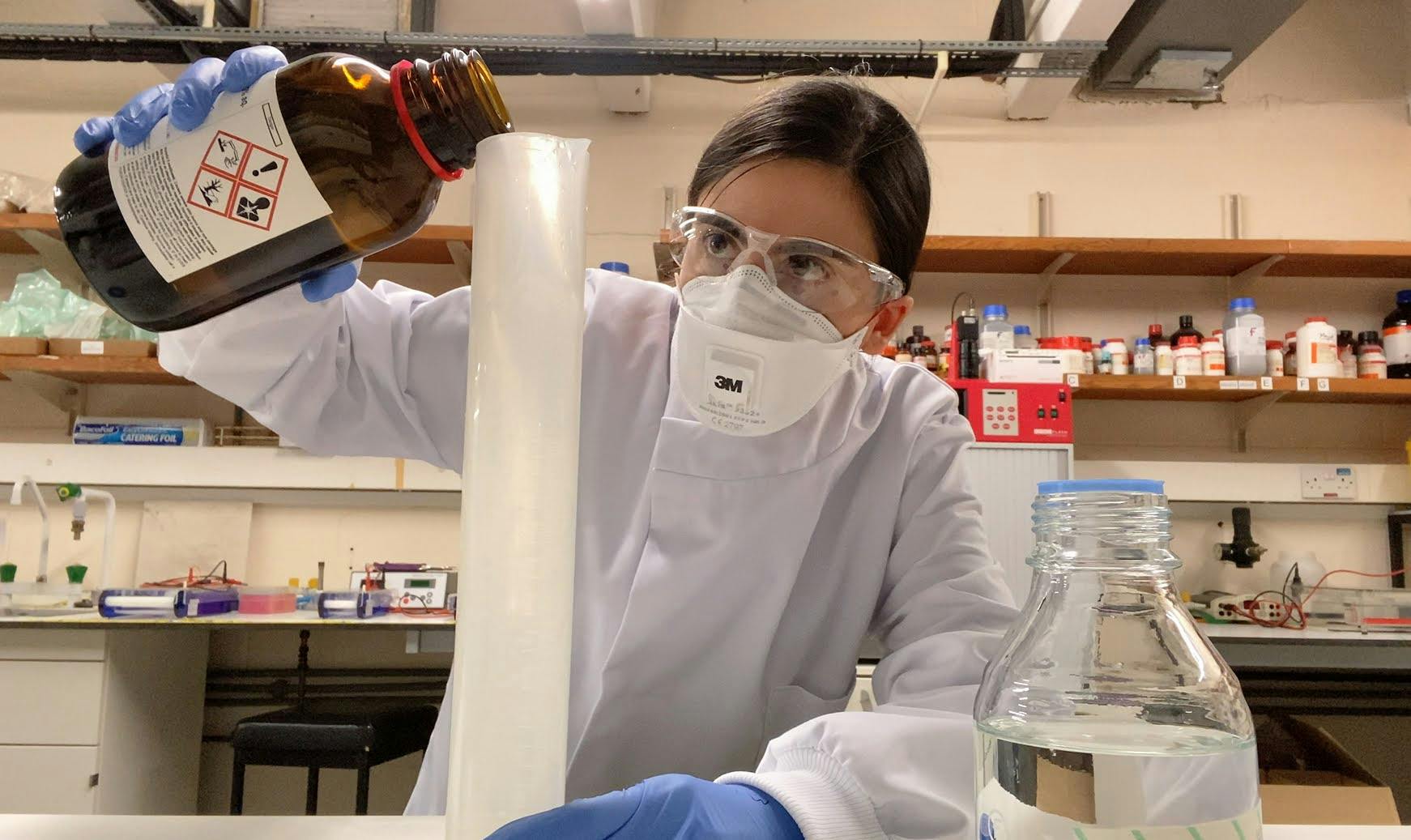✍️ Author: Dr Eleni Christoforidou
Home
Making up a disinfectant solution.
A Day in the Lab: Employing Viruses to Transfer Genes into Cells
🕒 Approximate reading time: 3 minutes
Today's lab adventure revolved around using a virus as a genetic courier, carrying a specific gene into a mammalian cell. This involved preparing a special disinfectant solution to neutralise the virus after the experiment. Even though the virus has been genetically modified to disable its ability to replicate and spread to other cells after infecting a host, extreme caution is exercised to ensure its proper disposal. This includes soaking all used tubes, pipette tips, gloves, and other consumables in the disinfectant before incineration.

The core of my experiment is grounded in a technique called viral transduction. This is a process in which a foreign DNA is introduced into a cell through a viral vector. Viruses, thanks to their evolutionary proficiency, have developed specialised molecular mechanisms to transport their genomes efficiently into the cells they invade. Viral vectors come with several beneficial properties:
Safety: The viral vectors are modified to minimise risks during handling. This usually involves removing a section of the viral genome crucial for viral replication.
Low toxicity: The viral vector should exert a minimal effect on the physiological condition of the infected cell.
Stability: Some viruses exhibit genetic instability and can rearrange their genomes rapidly. This is counterproductive to the predictability and reproducibility of work involving a viral vector, and is circumvented in their design.
Cell type specificity: Many viral vectors are engineered to infect a broad spectrum of cell types. However, at times the viral receptor can be modified to direct the virus towards a specific cell type.
Identification: Viral vectors are usually equipped with particular genes, known as markers, which help determine which cells have incorporated the viral genes. A common marker is resistance to a certain antibiotic. These cells can then be easily isolated because cells that have not absorbed the viral vector genes will lack antibiotic resistance and therefore cannot survive in its presence.
Today's session showcased the intricate interplay between virology and genetics, and the important role that viruses can play in advancing our understanding and manipulation of genetic material.